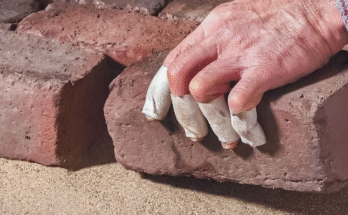Raise your hand if you have ever cut what you thought was a perfect crown cope only to find out it was open on the top or bottom? I’m raising my hand, too!
There is a great deal of misunderstanding about how copes work: for many carpenters, pressured by the need to ‘get the job done,’ cope joints are mysterious puzzles they haven’t the time or the patience to solve. But if we understand what makes a coped joint work then every cope can fit perfectly on the first try.

The mockup I designed in the previous video that Gary used proves that—with a slight adjustment—a cope joint will accommodate a corner that is 2 degrees out of square, and 2 degrees over a 12-ft. wall is 5 in. out of square.
A cope joint can still close tightly, even if the ceiling is out, too. This is why progressive carpenters who care about craftsmanship, as well as production finish carpentry crews, cope all inside corners. The joinery is tighter, and coping is faster than mitering. Cut a cope a little long and snap it in place—it will close up even tighter. And if you cut that square end a 1/16-in. short? No problem! A cope will cover all of it but the very bottom edge.
If you do cut miters for inside corners, each piece must be cut precisely the right angle and length. If a mitered molding is too long, the long point will bury itself in the drywall, making it impossible to mate the miter joint. Cut a miter too short—well, you all know what that means—cut a brand new piece.
Why copes work better
When we cut a 45-degree miter joint on baseboard and discover it doesn’t close because the walls aren’t square, there’s no choice but to re-cut the miter. However, that’s not the case with a cope joint.
If you look at the bottom of the base with a miter cut, you can easily visualize a 45-degree right triangle. Remember back to high school math: in a 45-degree right triangle, both sides are equal. So if the molding is 3/4-in. thick, then the base of the triangle must be 3/4-in. long. That means the miter cut is 3/4-in. deep from the long point at the back of the molding, to the short point at the front of the molding.




